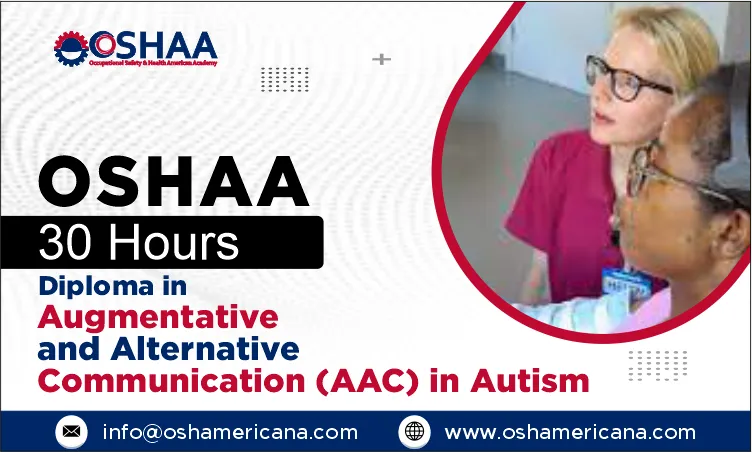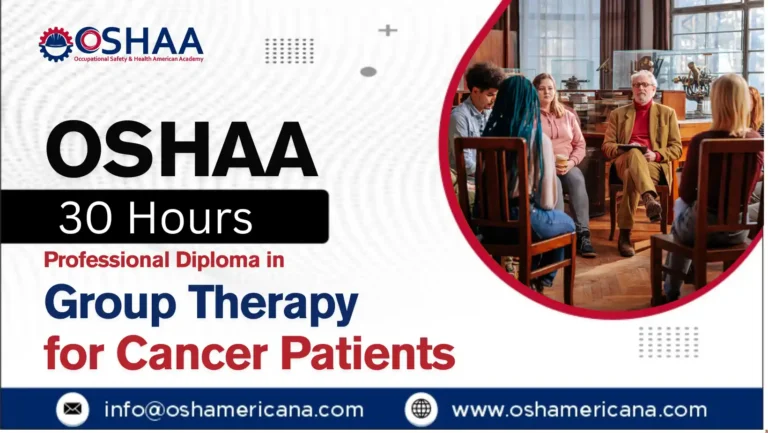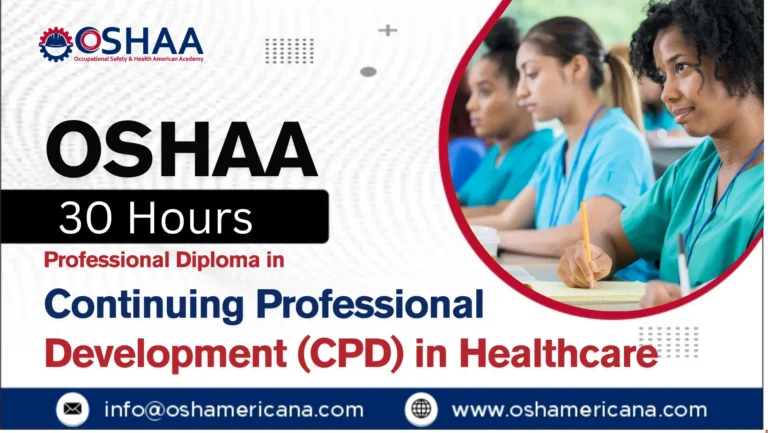Effective communication is fundamental to social interaction and personal development. For individuals with autism who experience challenges in verbal communication, Augmentative and Alternative Communication (AAC) plays a crucial role in enhancing their ability to express themselves. The OSHAA 30-Hours Diploma in Augmentative and Alternative Communication (AAC) in Autism is designed to provide in-depth knowledge and practical strategies to support individuals with autism in developing meaningful communication skills.
AAC encompasses a wide range of communication methods used to support or replace spoken language. These methods include sign language, picture exchange systems, communication boards, and high-tech speech-generating devices. For individuals with autism, AAC can bridge the gap between their thoughts and their ability to express them, improving social interaction, emotional regulation, and overall quality of life.
This diploma programme offers a structured approach to understanding and implementing AAC strategies effectively. It is suitable for professionals, caregivers, and educators who work with individuals on the autism spectrum and seek to enhance their communication abilities.
The OSHAA 30-Hours Diploma in Augmentative and Alternative Communication (AAC) in Autism provides essential training for anyone seeking to improve communication support for individuals with autism. Whether you are a professional or a caregiver, this course offers valuable insights and practical knowledge that can make a significant difference.
OSHAA 30-Hours Diploma in Augmentative and Alternative Communication (AAC) in Autism
Study Units
Learning Outcomes
Introduction to Augmentative and Alternative Communication (AAC) in Autism (3 Hours)
- Understand the fundamentals of AAC and its role in supporting communication for individuals with autism.
- Recognise the benefits of AAC in enhancing social interaction, emotional expression, and independence.
- Identify the key components of AAC systems and their applications in autism intervention.
Types of AAC Systems and Their Applications (4 Hours)
- Differentiate between unaided and aided AAC systems, including low-tech and high-tech options.
- Understand the suitability of various AAC methods, such as sign language, picture exchange systems, and speech-generating devices.
- Evaluate the effectiveness of AAC systems for individuals with different communication needs.
Assessment and Selection of AAC Tools for Individuals with Autism (4 Hours)
- Understand the assessment process for identifying appropriate AAC tools for individuals with autism.
- Learn how to conduct communication assessments and determine user-specific AAC needs.
- Explore factors influencing the selection of AAC systems, including cognitive, motor, and sensory considerations.
Integrating AAC into Daily Communication and Social Interaction (4 Hours)
- Develop strategies to incorporate AAC into everyday activities and social interactions.
- Understand how to create a supportive environment that encourages AAC use.
- Learn techniques to facilitate communication between AAC users and their peers, caregivers, and professionals.
Enhancing Language Development Through AAC Strategies (5 Hours)
- Explore techniques for using AAC to improve vocabulary, sentence structure, and language comprehension.
- Understand how AAC can support literacy development in individuals with autism.
- Learn how to adapt AAC strategies to different communication and learning styles.
Overcoming Barriers and Challenges in AAC Implementation (3 Hours)
- Identify common challenges in AAC adoption and usage among individuals with autism.
- Learn problem-solving techniques to address resistance, device rejection, and technical difficulties.
- Develop strategies to train caregivers, educators, and therapists in effective AAC implementation.
Technology and High-Tech AAC Devices for Autism Communication (4 Hours)
- Explore advancements in AAC technology, including mobile apps, speech-generating devices, and eye-tracking systems.
- Understand how to customise AAC devices to suit individual communication needs.
- Learn best practices for maintaining and troubleshooting high-tech AAC tools.
Ethical and Practical Considerations in AAC Use (3 Hours)
- Understand ethical considerations related to AAC selection, training, and implementation.
- Learn about the rights of AAC users and the importance of personalised communication support.
- Recognise the role of professionals in promoting ethical and inclusive AAC practices.
- Acquire an in-depth understanding of Augmentative and Alternative Communication (AAC) and its critical role in supporting individuals with autism.
- Develop specialised skills in assessing, selecting, and implementing AAC tools to enhance communication and interaction.
- Gain proficiency in evidence-based strategies to support language development, social integration, and literacy through AAC interventions.
- Overcome practical challenges in AAC adoption by applying advanced problem-solving techniques and implementation strategies.
- Stay informed on the latest advancements in AAC technology, including high-tech communication devices, mobile applications, and speech-generating systems.
- Strengthen professional competencies in working collaboratively with caregivers, educators, and therapists to ensure optimal AAC outcomes.
- Understand and apply ethical and legal frameworks governing AAC use, ensuring compliance with best practices and safeguarding the rights of users.
- Enhance the quality of life and independence of individuals with autism through structured and personalised communication support.
- Advance career prospects in speech and language therapy, special education, autism intervention, and assistive communication technology.
- Earn a recognised professional certification that enhances credibility and career progression within the field of AAC and autism support.
- Speech and Language Therapists – Professionals seeking to enhance their knowledge and expertise in AAC interventions for individuals with autism.
- Special Education Teachers – Educators working with students who require AAC support for communication and learning.
- Occupational Therapists – Practitioners aiming to integrate AAC strategies into therapy sessions to improve functional communication.
- Healthcare Professionals – Nurses, psychologists, and allied health professionals involved in autism support and intervention.
- Parents and Caregivers – Individuals looking to understand and implement AAC strategies to support a child or loved one with autism.
- Behavioural Therapists – Specialists working with autistic individuals who require alternative communication methods to express themselves effectively.
- Social Workers and Support Staff – Professionals in care and community support roles who engage with individuals using AAC systems.
- Assistive Technology Specialists – Experts developing or implementing AAC tools and technologies for individuals with communication difficulties.
- Education Administrators and Policy Makers – Individuals involved in curriculum design, special education policies, or AAC accessibility advocacy.
- Students and Aspiring Professionals – Individuals pursuing careers in speech therapy, special education, or autism-related fields.







